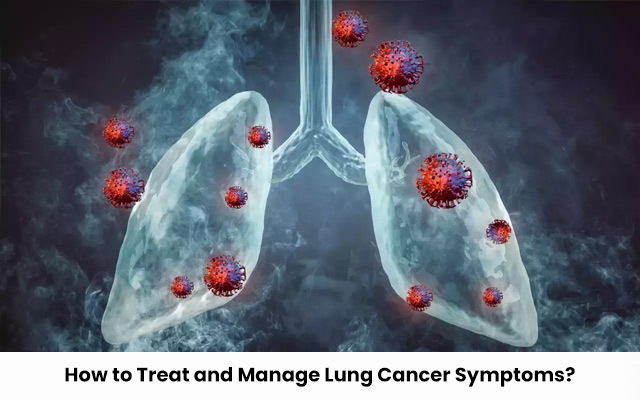Lung cancer is a serious disease that begins in the lungs and can spread to other parts of the body if not treated early. Like other cancers, it starts with the uncontrolled growth of abnormal cells, which form tumors. Understanding and managing its symptoms is important to have early lung cancer treatment.
Common Symptoms of Lung Cancer
Lung cancer symptoms can vary from person to person, but here are some of the most common signs to watch for:
- Persistent cough: A cough that gets worse over time and doesn’t go away.
- Trouble breathing: You may feel short of breath, even when doing simple activities.
- Chest pain or discomfort: This can be a sharp or dull pain, often felt when coughing or laughing.
- Loss of appetite: You might notice a decrease in hunger, leading to unintentional weight loss.
- Fatigue: Feeling tired most of the time, even when resting, can be a common symptom.
- Shoulder pain: Sometimes, the pain may spread to the shoulder or arms.
If you notice any of these symptoms, it’s important to see a doctor right away. Early detection can make a big difference in the effectiveness of lung cancer treatment.
Types of Lung Cancer
There are two main types of lung cancer, and each behaves differently:
- Small Cell Lung Cancer (SCLC): This type of lung cancer spreads quickly and is more common in smokers. It usually starts in the cells lining the bronchi (the airways in the lungs).
- Non-Small Cell Lung Cancer (NSCLC): This is the most common type of lung cancer, making up about 85% of cases. It grows more slowly than SCLC and has three subtypes: adenocarcinoma, squamous cell carcinoma, and large cell carcinoma.
Stages of Lung Cancer
Lung cancer is divided into stages that describe how far the cancer has spread. The stages are:
- Stage 1: The cancer is confined to the lungs and hasn’t spread.
- Stage 2: The cancer has spread to nearby lymph nodes.
- Stage 3: The cancer has spread further to the chest wall or other nearby areas.
- Stage 4: The cancer has spread to distant organs, such as the brain or liver.
Lung Cancer Treatment Options
Lung cancer treatment depends on the type and stage of cancer. Some of the common treatment options include:
- Chemotherapy: This treatment uses strong drugs to kill cancer cells. It’s often used in combination with other treatments like surgery or radiation.
- Radiation therapy: In this, high-energy radiation beams are directed at the tumour to kill cancer cells or shrink the tumor. This treatment is often used when surgery isn’t an option or after surgery to kill remaining cancer cells.
- Targeted therapy: This newer approach targets specific genes or proteins in cancer cells. It’s usually recommended for advanced cases of NSCLC.
- Immunotherapy: This treatment helps boost your immune system to fight cancer. It’s typically used in more advanced stages of lung cancer.
- Palliative care: For patients in later stages, palliative care helps in managing symptoms and improves the quality of life. This includes managing pain, breathing issues, and fatigue.
- Surgery: In the early stages, doctors may recommend surgery to remove the tumor or a part of the lung.
Conclusion
While lung cancer is a challenging disease, early diagnosis and a combination of treatments generally help in managing symptoms and increase survival rates. Regular visits to the best medical oncologist, especially if you have risk factors like smoking, is crucial for early detection.

